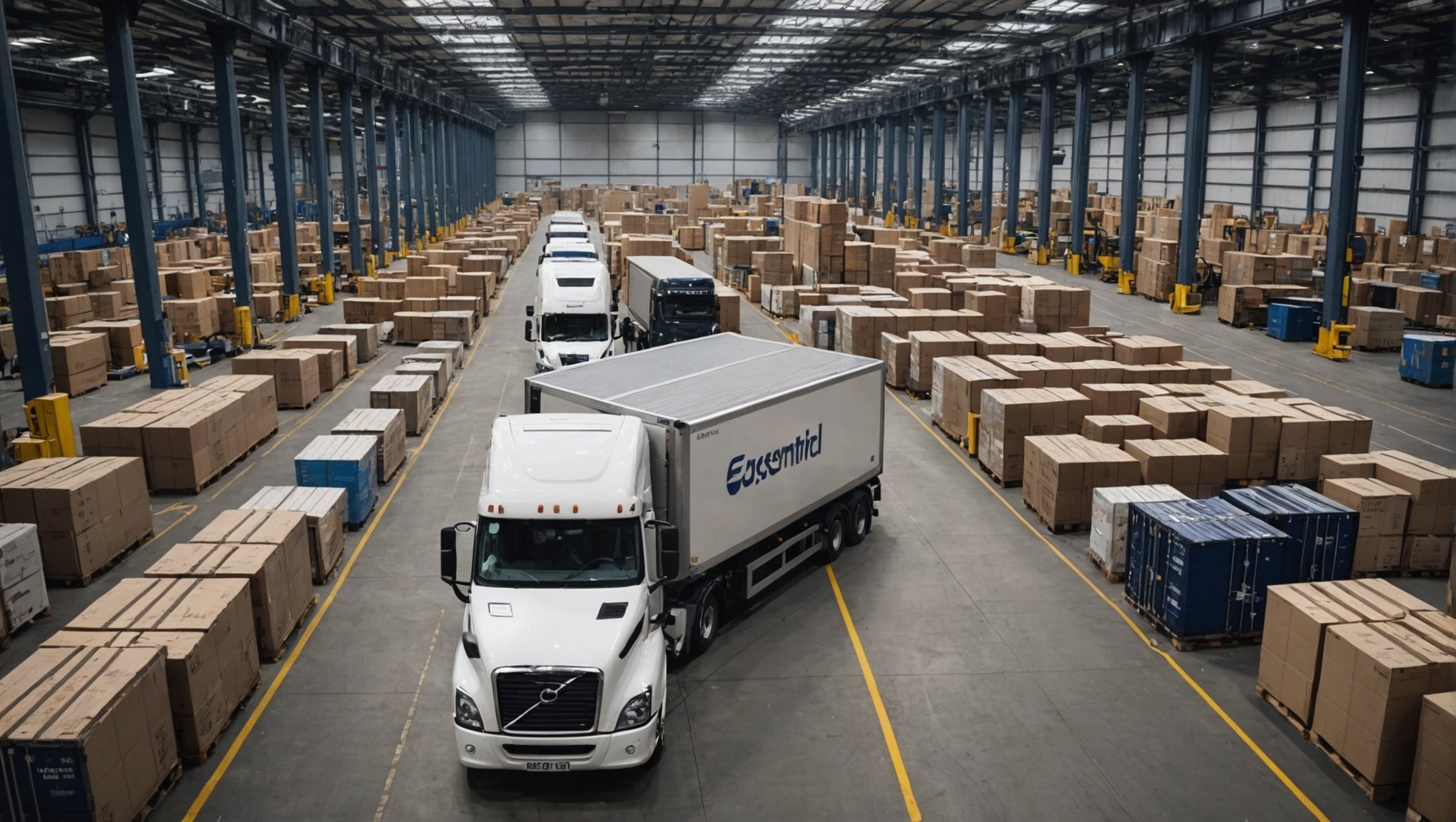Overview of Digital Transformation in UK Logistics
The digital transformation in the UK logistics sector is vital for enhancing efficiency and competitiveness. It involves integrating advanced digital technologies to streamline operations, improve customer satisfaction, and reduce costs. This transformation has become a cornerstone for modern logistics, allowing businesses to adapt to an ever-changing market landscape.
Currently, many UK logistics firms are in various stages of adopting digital technology. Some have embraced advanced solutions like artificial intelligence (AI) and the Internet of Things (IoT), which facilitate better data management and operational transparency. Others are still in early stages, gradually exploring the potential of these innovations to revolutionise their supply chain processes.
This might interest you : Mastering Customer Expectations: Proven Strategies for UK Consultancy Firms
The economic impact of digital transformation cannot be underestimated, as it has the potential to significantly boost productivity and drive growth within the sector. By enhancing resource management and reducing operational inefficiencies, logistics companies can achieve greater profitability and sustainability. Furthermore, this evolution leads to better service offerings, which can increase market share and customer loyalty.
In summary, digital transformation is reshaping UK logistics, bringing opportunities for substantial growth and efficiency improvements across the industry.
Also to read : Essential Elements for Creating an Effective Brand Loyalty Program for a Retail Chain in Leeds
Key Technology Innovations Driving Transformation
In the realm of logistics and supply chain, technology innovations are dramatically reshaping traditional practices. The integration of digital tools is at the forefront of this transformation, enabling improved efficiency and accuracy.
Automation Technologies
The advent of robotic process automation (RPA) has revolutionised logistics by automating repetitive tasks. From managing shipment documentation to real-time tracking, RPA enhances operational efficiency. Additionally, automated warehousing solutions, like robotic pickers and conveyors, streamline operations, reducing human error and accelerating order fulfilment. These innovations impact supply chain efficiency by lowering costs and improving delivery times, creating a seamless operational flow.
Data Analytics and Big Data
Big data plays a crucial role in decision-making processes within logistics. By analysing vast amounts of data, companies can utilise predictive analytics to anticipate demand fluctuations and optimise inventory levels. This approach not only forecasts demand but also mitigates risks associated with overstocking or stockouts. Case studies demonstrate how successful data integration leads to improved customer satisfaction and operational agility.
Internet of Things (IoT)
With IoT devices, real-time tracking and visibility enhancements have become integral to warehouse management. IoT sensors monitor inventory levels, enabling dynamic adjustments to meet demand. This technology also optimises service delivery by providing real-time updates on the supply chain, ensuring timely response to market changes, ultimately refining inventory management processes.
Workforce Training and Development Strategies
Equipping employees with the right skills is essential for seamless digital adoption. Given technological advancements, reskilling and upskilling efforts need strategic emphasis, particularly in sectors like logistics. Firms are tasked with adapting their workforce to meet the demands of digital transformation effectively.
Workforce Training initiatives are crucial for this transition. Implementing programs aimed at reskilling current employees ensures that their skillset aligns with emerging technologies. Such programs often focus on digital tools and automation, fostering a culture that embraces continuous learning.
In logistics, companies are increasingly recognising the importance of these strategies. Notably, the implementation of training programs has proven to boost operational efficiency and adaptability. One prominent example includes a logistics firm that successfully revamped its training modules, integrating digital skills development into its core operations. This led to enhanced productivity and reduced overhead costs, illustrating the tangible benefits of investing in human capital.
By showcasing the impact and practical benefits of these strategies, firms can inspire confidence among their workforce. Encouragement from leadership, alongside accessible skills development opportunities, forms a strong foundation for transformational success.
Process Optimization through Digital Transformation
In the ever-evolving logistics operations, integrating lean management principles with cutting-edge digital tools is a game changer. By embedding these practices, businesses have witnessed unprecedented efficiency improvements.
Lean Management Principles
Successful implementation of lean methodologies starts with understanding their synergy with digital tools. When properly aligned, they create streamlined processes, eliminate waste, and lead to impactful process optimization. For example, a logistics firm revamped its operations by using real-time tracking and automated scheduling, significantly reducing delivery times and enhancing customer satisfaction.
Measuring efficiency and effectiveness post-transformation is pivotal. Key metrics include reduced lead times and increased throughput, which signal tangible gains from the digital and lean amalgamation.
Continuous Improvement Frameworks
Establishing a culture of continuous improvement ensures sustained efficiency gains. Critical to this is empowering employees to identify inefficiencies and suggest improvements. Tools such as Six Sigma and Kaizen help evaluate processes continually, ensuring they align with the organization’s evolving needs.
The benefits of adopting a continuous improvement mindset are multifold. Not only does it foster an innovative atmosphere, but it also achieves sustained process optimization. Teams become adept at proactively solving problems, leading to lasting efficiency improvements that bolster overall performance.
Case Studies of Successful Digital Transformation
In exploring the UK logistics sector, several standout case studies illustrate how leading firms have embraced digital transformation. These examples showcase the strategic application of best practices that drive innovation and efficiency.
A prime example is a leading UK logistics firm that integrated advanced automation technology to streamline their operations. By implementing AI-driven routing software, they reduced travel time and fuel consumption, demonstrating significant operational efficiency. The company’s experience highlights critical success factors, such as leveraging data analytics for real-time decision-making and investing in employee training to manage new technologies.
Another case study focuses on a firm that adopted a cloud-based logistics platform. This shift enabled seamless operations across multiple distribution centres, enhancing both scalability and flexibility. Here, success was attributed to the strategic alignment of technology implementations with business goals and robust change management processes.
These case studies offer valuable lessons:
- Align technology with specific business objectives.
- Prioritise training and development to cultivate an agile workforce.
- Use continuous feedback loops to iterate and improve processes.
Firms venturing into digital transformation can draw from these findings for tailored strategies that ensure sustainable change.
Challenges and Barriers to Digital Transformation
Digital transformation is essential but not without its challenges. Organisations often face several barriers to achieving successful digital adoption, which must be addressed strategically.
Common Obstacles in Digital Adoption
Resistance to change is a significant hurdle in many organisations. Employees and stakeholders may be hesitant to adopt new technologies due to unfamiliarity or fear of obsolescence. Moreover, budget constraints can severely impede progress. Allocating limited financial resources to technology upgrades may require meticulous financial management. Another critical obstacle is technical infrastructure. Many enterprises struggle with outdated systems that are incompatible with modern digital solutions.
Strategies to Overcome Barriers
Overcoming these barriers necessitates thoughtful strategies. Effective change management practices can mitigate resistance by involving employees in the transition process, offering training, and maintaining transparent communication. Moreover, securing leadership buy-in is crucial. When leaders are invested in the change, they can drive the initiative forward with unparalleled motivation. Finally, developing a clear digital transformation roadmap provides a structured approach. This roadmap should outline step-by-step actions, timelines, and measurable objectives to ensure digital readiness and keep the transformation process on track. Adapting these strategies can facilitate smoother transitions and enhance organisational efficiency.
Future Trends in Digital Transformation for Logistics
In the dynamic world of logistics, Future Trends are set to revolutionize the sector. Emerging technologies such as autonomous vehicles, drones, and blockchain are reshaping how goods are moved and tracked. Logistics Innovations like these are expected to increase efficiency, accuracy, and transparency in supply chain operations. One potential development is the wider adoption of IoT devices. These can provide real-time data and insights, enhancing decision-making and streamlining processes.
Predictions suggest that new models of operation and customer service will become more customer-centric. With increased demand, companies may adopt flexible delivery schedules and personalised services. This shift is not only about meeting customer expectations but also about creating a competitive edge in a fast-paced Market Outlook.
To embrace these upcoming changes, strategic insights include leveraging data analytics for improved forecasting and operational planning. It’s important for logistics companies to invest in adaptable systems and explore innovative partnerships. By doing so, they can better navigate the evolving landscape and maintain a competitive position in the market. Staying ahead in the logistics sector means being proactive about these trends and turning them into opportunities for growth and enhancement.











